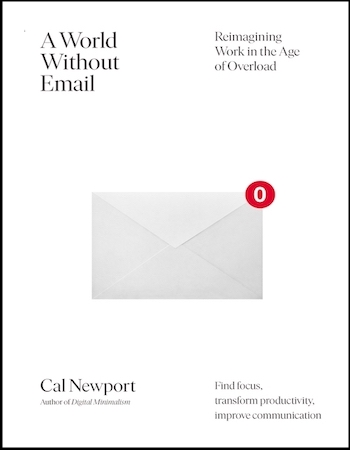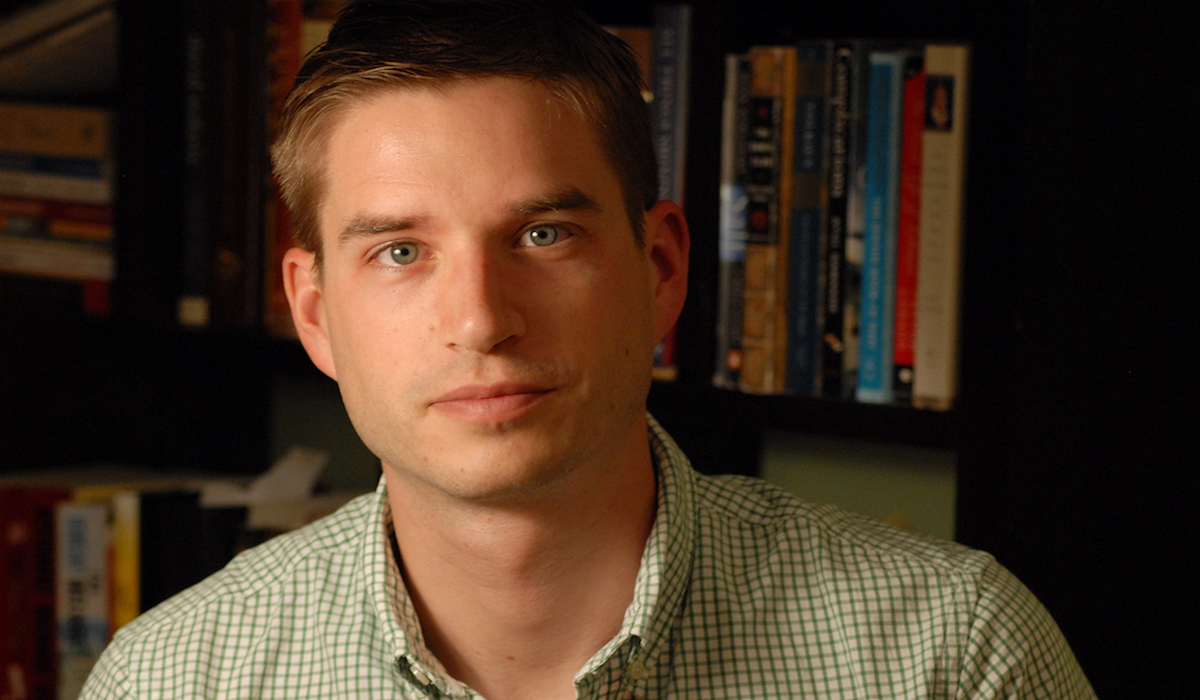How Email Wrecked Our Brains (and How To Rewire Them), With Professor Cal Newport

When tech company IBM introduced internal email in the Eighties, it first quantified the amount of intra-organisation analogue communication: voicemails, memos, handwritten notes left in the recipient’s cubicle. Within days, the shiny, new, amply provisioned and extremely expensive email server crashed under five to six times the projected volume of traffic. Employees were not only sending way more messages than before but also copying in multiple recipients, where they’d previously corresponded person-to-person.
Email fundamentally changed how we work, Cal Newport, the author of highly regarded books such as Deep Work (one of Form’s favourite self-help books) and Digital Minimalism, explains over Zoom. This new mode of collaboration came about “rapidly, and largely unintentionally” – that is, without anybody consciously deciding this was a better way to work: “And I think we underestimated the extent to which email changed us – more or less without our permission.”
The Never-Ending Inbox
As well as an author, Newport is an associate professor of computer science at Georgetown University, Washington DC, a contributor to prestigious publications such as The New York Times, The New Yorker, and Wired, a podcast host and frequent podcast guest. All of which indicates that his ideas for improving productivity hold water. His latest book, A World Without Email, quantifies the disruption wrought by the now-ubiquitous technology, citing figures showing that the average number of messages sent and received a day has risen from 50 in 2005 to 126 in 2019.
 A study by the University of California, Irvine, found the average number of daily inbox checks at one large company was 77, but some employees racked up as many as 400. Productivity software company RescueTime determined that its users checked email or instant messaging services such as Slack every six minutes. Respondents to an Adobe survey reported that email took up three hours a day – cumulatively, that is. Communication is now fragmented, as is our attention. All of which explains why the projected productivity gains of email, and personal computers generally, haven’t materialised.
A study by the University of California, Irvine, found the average number of daily inbox checks at one large company was 77, but some employees racked up as many as 400. Productivity software company RescueTime determined that its users checked email or instant messaging services such as Slack every six minutes. Respondents to an Adobe survey reported that email took up three hours a day – cumulatively, that is. Communication is now fragmented, as is our attention. All of which explains why the projected productivity gains of email, and personal computers generally, haven’t materialised.
But simply resolving to not use email as much, or after 5 pm, or at all on Fridays, doesn’t work because email is how we work. “Until you replace the underlying workflow, you can’t solve the problem by dealing with a superficial habit,” says Newport. “So we’re stuck in this place where we try to attack the problem at the top with etiquette, and norms, and hacks, and habits, and none of that can work until we get down to the roots.”
How Email Has Rewired Our Brains
At the bottom is what Newport calls “the hyperactive hive mind”, a workflow in which everything is carried out in an asynchronous (not at the same time), ad-hoc manner. An ever-filling inbox is therefore inevitable. And in “knowledge” or office work, unlike most other kinds, productivity is “a personal matter”.
Companies make it none of their business how the work gets done, leaving employees bouncing messages back and forth in a vicious “cycle of responsiveness”. Overloaded, we fall back on the flexibility of firing off messages, further fragmenting our attention. Less efficiency, more overload, more email.
It’s not surprising then that researchers who variously wired up office workers to heart rate monitors and placed thermal cameras under their monitors (to capture the heat signature of psychological distress) found that using email corresponds with higher stress. Nor that, when stressed, you type faster emails that contain more words conveying anger. It is surprising that if you score highly for neuroticism then batching emails, often recommended as a coping mechanism, can actually make you more stressed.
Email conflicts with our evolutionary programming to take very seriously one-on-one interactions, upon which access to resources might’ve depended, says Newport. So to your ancient brain, an unread message is equivalent to ignoring a tribe member tapping you on the shoulder, with the possible consequence of starvation next winter: “That’s part of the reason why people have this amorphous, hard-to-articulate dislike for work.”

Professor Cal Newport
Is It Time To Break Up With Our Inbox?
By the same token, when members of the Boston Consulting Group were given Predictable Time Off – set periods disconnected from email and phone each week – they became happier and more satisfied with their jobs. They were also more productive, not less.
Of course, it’s not quite as simple as not using email as much, which has ramifications for your colleagues and clients. To make your boss more amenable, Newport suggests “budgeting your attention” by quantifying how much time you spend on email versus producing: “It’s very difficult for a manager to say, ‘Well, I’d rather you do very little or none of the focused work that actually creates value for the company because if you did then there might be times when I can’t reach you, so just do shallow work all the time.’”
Even if your boss is unsympathetic, you can still employ some of Newport’s email-culling, well, hacks. Keep your messages short – the length of a text, say, or five sentences – and restrict anything more involved to a voice conversation. Use a non-personal email address – eg contact@example.com – to manage expectations of your responsiveness. Divide your time, whether hours in the day or days in the week, between “specialist” (actual work) and “support” (admin) – with separate email addresses, even. Use meeting scheduling tools such as X.ai or Acuity. Hire an assistant.

Delving Deep Into The World Of Taskboards
If email is how you work, however, then you can only go so far without an alternative workflow – like task boards, the hero of A World Without Email. Digital versions of the analogue varieties found in factories and hospitals, task board-style project management tools such as Trello, Flow and Asana, in tandem with short, regular status meetings, “take out a lot of the overhead in collaboration”, says Newport, and are more effective than firing off messages as people think about or need things. He’s “a big fan”.
Unlike a cluttered inbox, task boards divide information so you only see what’s relevant. And their sealed context harmonises with the optimal way our brains work: “sequentially”, or on one thing at a time. (Switching tasks between, say, email and work leaves “attention residue”: bandwidth still taken up by the previous task, hampering performance.)
Newport also loves how you can use task boards personally to marshal your own work, and make your inbox a conduit to that, regardless of your organisation’s stance. In his recently finished, heavily administrative role as director of graduate studies, he implemented task boards, communication protocols and ticketing systems – yes, like that of your IT department, an early adopter of not being instantly contactable.
Minimising task-switching and sense of overload are Newport’s two key properties for a calmer and more rational alternative to the hyperactive hive mind: while work execution should be left up to the individual, workflow really shouldn’t. It’s easy, he says, for email to seem fundamental: “This must be how we work.” Car workers thought that too, before Henry Ford’s production line. But as Newport proves, there are other worlds than this.
A World Without Email: Reimagining Work in an Age of Communication Overload by Cal Newport is available to buy now.


















